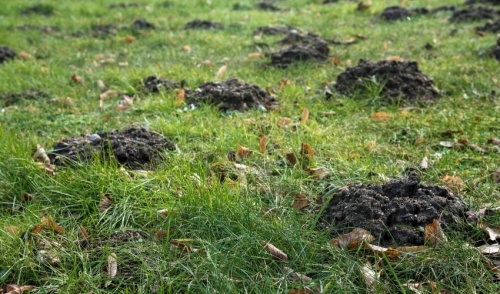
Avoid Grub Invasion
Your lawn can be a great source of personal pride and a tremendous asset to your home’s curb appeal, but invading grubs can quickly damage even the most well-maintained turf. It is possible, however, to avoid grub invasions with careful preventative steps and alert monitoring.
About Grubs
Grubs are the larval form of beetles, and there are more than 400,000 species of grubs found throughout the world, with more species being identified and classified regularly. The larva is the first stage of the beetle’s life cycle after it hatches from the egg, and it is the most active growing stage, when the insects are voracious and feed almost constantly to promote their growth. Most grubs go through several molts as they grow. The larval stage could last just a few days or may last weeks, months, or even years, depending on the grub species. Eventually a grub will become a pupa and will emerge from that final molt as a mature, adult beetle, destined to lay eggs and continue the life cycle with the next generation.
Most grubs that appear in lawns and landscaping will be white, with distinctive “C” shapes as they curl up. They have darker brown, black, or reddish heads, and very stubby legs along the length of their bodies. Many different grub species can look similar, but fortunately, the treatments to eradicate them are effective on most species.
How Grubs Damage Lawns and Landscaping
Any healthy lawn may host a few grubs, but when the grub populations expand, damage will start to appear. Grubs feed on grass roots and organic material in the soil, not only stopping the turf from getting nutrition, but also limiting the nutrients available to flowers, trees, and shrubs.
When grubs are present, grass will being to wilt and turn yellow or brown, often in irregularly-shaped patches that spread throughout the lawn. Because the roots have been destroyed, the grass could easily be pulled up in clumps or rolled up as if it was a rug or carpet, without roots keeping it firmly anchored.
When adult beetles emerge, they will feed on the foliage and flowers of landscaping plants, which is another sign that grubs are present and steps need to be taken to control their spread.
Even if you don’t see grubs or beetles, other wildlife can be a sign that your lawn has a grub problem. Moles, armadillos, skunks, raccoons, and opossums feed on grubs, and if these animals are digging into your lawn looking for a meal, you should be on the lookout for a grub invasion.
Preventing a Grub Invasion
Grubs are most susceptible to pesticide treatments when they are young and actively feeding. At that time, applying the appropriate grub control chemicals to the lawn and watering the pesticides into the turf as prescribed in the application instructions can be effective to eradicate grubs. Other steps, however, are necessary to keep grubs under control and prevent an invasion from causing extensive lawn and landscaping damage.
- Be alert to properties throughout the neighborhood, watching for brown lawn patches that could indicate grubs. If the insects are present on adjacent properties, they will inevitably move into your lawn, and steps should be take early to control the problem.
- If grubs appear, identify the species carefully in order to use the most effective pesticides or other control techniques. Local plant nurseries, extension offices, and pest control companies can assist with grub and beetle identification.
- Water the lawn properly and adjust irrigation to compensate for natural rain and seasonal changes. Grubs thrive in moist environments, and opting for a drier lawn can make your grass less welcoming for egg-laying beetles and hungry grubs.
- Remove excess thatch from your turf. Grubs feed on large quantities of organic material, and thatch can be a delicious meal for these voracious insects. Less thatch means less food for grubs, and will also improve drainage to minimize the moistness grubs prefer.
- Consider applying beneficial nematodes to your property. These microscopic parasites will not harm humans, pets, or plants, but will help keep grubs at bay. Buy nematodes from a reputable retailer, and apply them as recommended for the best results.
- Remove beetle-friendly host and feed plants from your landscaping. This can make your property less welcoming to adult beetles, so they will be less likely to lay eggs in your lawn. The exact plants to remove will vary depending on the grub species most prevalent in your area.
- Hand-pick adult beetles to eradicate them from your plants. While beetle traps are available, most traps use pheromones to attract insects to the trap, which can inadvertently bring more beetles to your yard even as you try to eliminate grubs.
After you’ve taken steps to eliminate grubs, be sure to reseed and repair damaged areas of your lawn quickly. Weak or thin patches are easier for new grubs, as well as weeds, to invade your lawn, but repairing the area with hardy turf can keep unwanted guests away.
